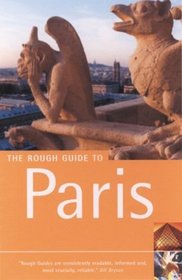Search -
Rough Guide to Paris 9 (Rough Guide Travel Guides)
Rough Guide to Paris 9 - Rough Guide Travel Guides
Author:
Introduction It's little wonder that so many wistful songs have been penned over the years about France's capital. What city experiences could be more seductive than sitting in the gardens of Notre-Dame beneath the drifting cherry blossom, strolling the riverside quais on a summer evening, sipping coffee and cognac in the early hours to the... more »
Author:
Introduction It's little wonder that so many wistful songs have been penned over the years about France's capital. What city experiences could be more seductive than sitting in the gardens of Notre-Dame beneath the drifting cherry blossom, strolling the riverside quais on a summer evening, sipping coffee and cognac in the early hours to the... more »
ISBN-13: 9781843530787
ISBN-10: 1843530783
Publication Date: 11/3/2003
Pages: 512
Rating: 1
ISBN-10: 1843530783
Publication Date: 11/3/2003
Pages: 512
Rating: 1
4.5 stars, based on 1 rating
Genres:
- Travel >> Europe >> France >> General
- Travel >> Europe >> France >> Paris
- Travel >> Guidebook Series >> Rough Guide




